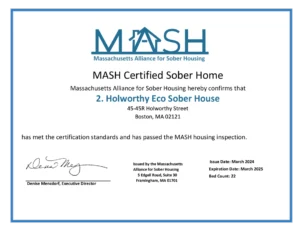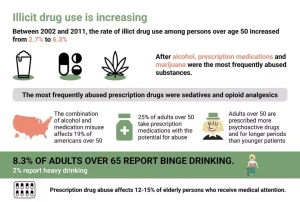Signs and Symptoms of Addiction
According to the National Institute on Alcohol Abuse and Alcoholism, in 2012, 17 million adults ages 18 and older had alcohol use disorder in the United States. While consumption of any illicit drug https://ecosoberhouse.com/ can be dangerous from a toxicological perspective, it can also create problems from a behavioral perspective. Intoxication with alcohol is a major cause of traffic accidents and violence to others.
- Or a person might start consuming alcohol before a social event, or even early in the day.
- People with drug addictions continue to use drugs compulsively, despite the negative effects.
- The ASI is typically used in gauging the type and intensity of treatment a person might need and as a measure of the success of treatment.
- They may try to sneak in or out of the house, try to hide their drugs in their room or car, and they may spend more time alone in their room with the door locked.
- Memory problems and difficulty concentrating are also common psychological symptoms of addiction.
How effective are residential treatment centers for teens suffering from anxiety and mild substance abuse?
If your drug use is causing problems in your life—at work, school, home, or in your relationships—you likely have a drug abuse or addiction problem. Explore the warning signs and symptoms and learn how substance abuse problems develop. They release dopamine, a chemical in your brain that makes you feel good — until the substance wears off. Your brain and body want to continue this good feeling, even if it’s unhealthy. It can significantly impact your emotional well-being, relationships, education and career. Many different types of medications are commonly prescribed to help treat substance use.

What are the signs of a substance use disorder?
Unexplained or seemingly unprovoked mood swings can occur when someone is struggling with addiction. When the person is high, they may be hyperactive, affectionate or excitable. As soon as the high wears off and withdrawal symptoms set in, they may become angry, irritable or even verbally abusive. When you’re wondering how to tell if someone is using drugs, physical signs can be your first indicator, followed by behavior and psychological changes. Another way to recognize addiction is to pay attention to your friend or family member’s mental and physical health. Whether the addiction is to a drug or a behavior, their health will almost always decline.
Drug Addiction Crisis: States with Highest Rates and Their Battle Against Substance Abuse
- Knowledge is power, and recognizing these signs early can be the difference between a life derailed and a future reclaimed.
- Drug cravings can be fierce, and fear of withdrawal symptoms often drives continued drug use.
- Cravings intrude on thought processes, create considerable distress, and focus attention on immediately satisfying the desire for the substance.
- Someone who has used psilocybin, or “magic mushrooms,” may experience hallucinations, nausea, muscle twitching, and difficulty differentiating between hallucinations and reality.
- It’s like the person is constantly on edge, jumping at shadows and seeing threats where none exist.
As they work to find their place, they can be strongly influenced by peer pressure. If young people spend time with other teens who are engaged in risky, unhealthy behaviors, they are more likely to engage in those behaviors themselves. With the right treatment and support, you can counteract the disruptive effects of drug use and regain control of your life. The first obstacle is to recognize and admit you have a problem, or listen to loved ones who are often better able to see the negative effects drug use is having on your life. Experimenting with drugs or alcohol is tempting for teenagers because they may not know or understand the dangers of using substances—even just once. Academic pressure, low self-esteem, and peer pressure are just a few factors that increase their risk of substance use.
You’ll soon start receiving the latest Mayo Clinic signs of drug use health information you requested in your inbox.

How to Help Someone with a Drug Addiction?
Addiction and the intense need for a drug may cause someone who is normally very docile to become agitated and aggressive. Also, stimulant drugs may cause a normally depressed person to appear very energetic or even manic. Increased drug abuse can lead to anxiety or paranoia, especially if the drug has left their system and they are experiencing withdrawal. This article discusses the types and symptoms of substance use disorders, as well as how it’s diagnosed and treated. The signs of hallucinogen use vary depending on the specific hallucinogen in question.
Cocaine Can Be Fatal With First Use
The information we provide is not intended to be a substitute for professional medical advice, diagnosis or treatment. It should not be used in place of the advice of your physician or other qualified healthcare providers. Your loved one also is at greater risk of opioid use disorder if they get opioids without a prescription. And using opioids illegally increases the risk of drug-related death.

Physical addiction appears to occur when repeated use of a drug changes the way your brain feels pleasure. The addicting drug causes physical changes to some nerve cells (neurons) in your brain. Neurons use chemicals called neurotransmitters to communicate. These changes can remain long after you stop using the drug. Signs and symptoms of inhalant use vary, depending on the substance. Some commonly inhaled substances include glue, paint thinners, correction fluid, felt tip marker fluid, gasoline, cleaning fluids and household aerosol products.
What’s portrayed in movies, on TV, online and in music can also help shape perceptions about alcohol and drug addiction. Incomplete media messages can lead to dangerous misperceptions. The severity of addiction is only partially related to the amount of substance a person uses. The difference between mild and severe addiction is the number of the 11 DSM addiction criteria a person meets. The criteria relate to ability to control use, the negative impact use has on self and life, and the existence of physiological dependence. Substance abuse disorder is considered mild in the presence of two or three criteria.
